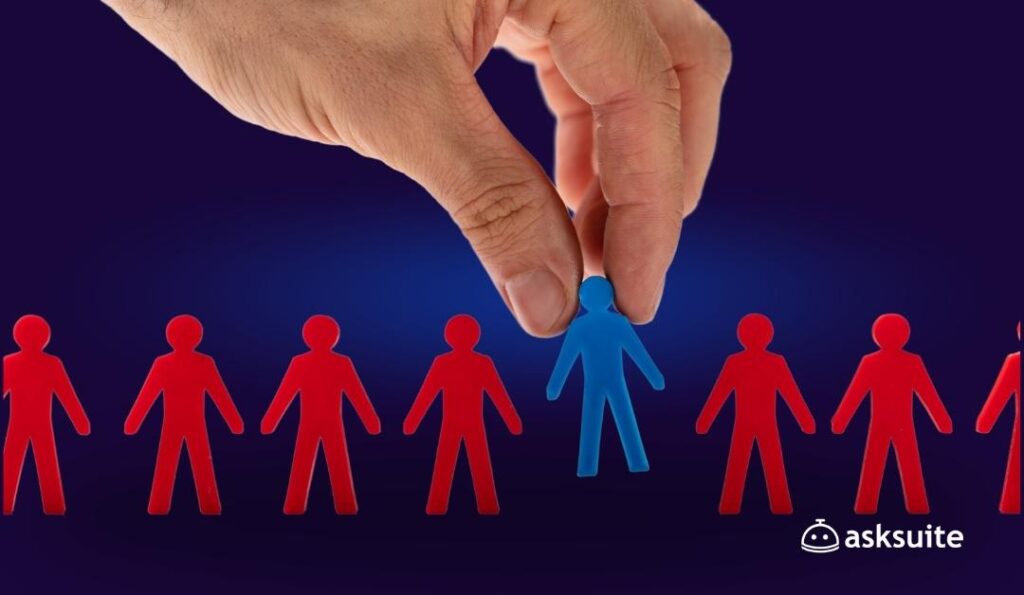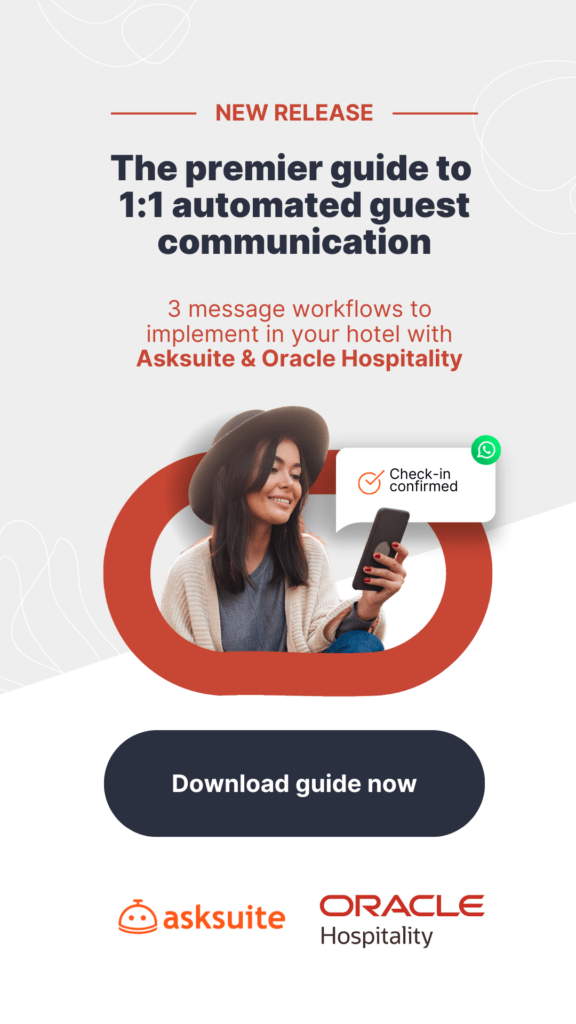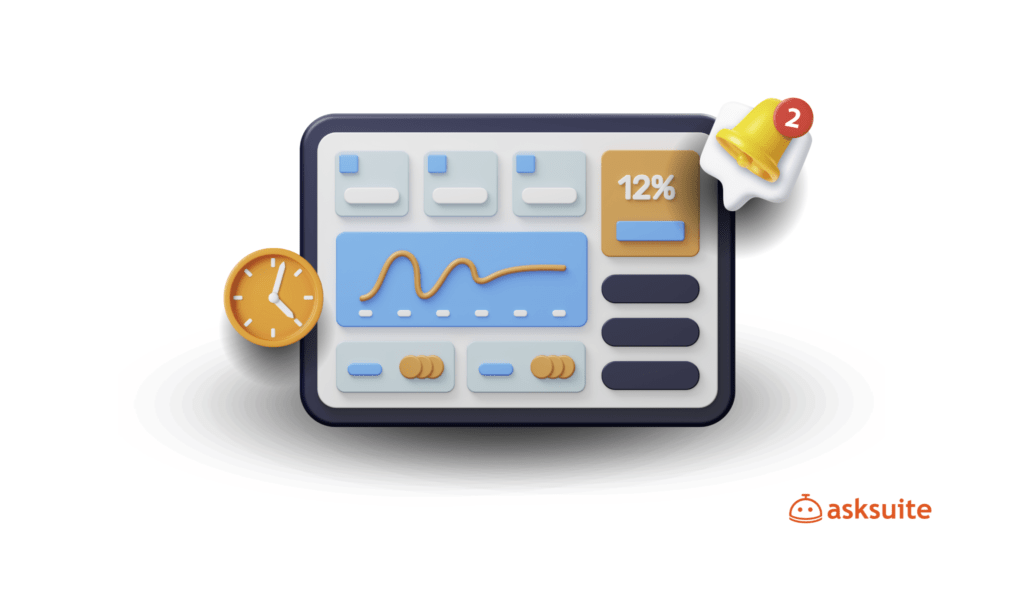A very common problem faced by hotels is not knowing exactly who they want to communicate with and who their target audience/potential guests/ideal guests are.
Hotels often end up investing in resources for marketing, creating an institutional voice, communicating in social media, developing content for digital channels, but… It doesn’t generate any results. The best they get is attracting a customer/traveler profile that doesn’t match what the hotel has to offer.
So one of the first things you need to understand when you’re developing your business model and marketing and service strategies is: get to know your guests – and check if they have the same profile as the Ideal guest that you’ve created for your business.
Well, you may be wondering: what is an Ideal Guest after all? That’s what you are going to learn in this article.
You are going to learn what buyer personas, Ideal Customer Profile (ICP), and target audience are, what an Ideal Guest is, how to create them, where to look for information to build them, and what strategy you should use to attract them. Also, you are going to learn how and why all of these factors affect the results of marketing campaigns. Although few hotels use this resource, it is very important for any hotel business.
We hope this piece of content helps you!
Buyer Personas, Ideal Customer Profile, and Target Audience
First of all, we need to understand why it’s important to have a lot of information about your guest or potential guest. It is based on this data that you will be able to personalize the customer experience at your hotel, making it more satisfying for customers.
This will increase the chances of customer loyalty. Loyal customers can help disclose your property, attracting more and more guests and increasing your revenue. That’s why the more information you have, the more you will know how to communicate and relate to your guests.
In this episode, we chat with Craig Carbonniere, Hospitality Leader, about how to improve the revenue of your hotel through the guest experience. Listen here:
That’s where the concepts of the target audience, Ideal Customer Profile (ICP), and buyer persona become important: by using them, you’ll get the information about your prospect. Let’s see the concepts below:
Target Audience
The target audience concept is already very popular in many industries and markets. It was until recently the most used one for detecting information about customers.
According to this concept, a general audience profile is defined and the company’s efforts are directed to this profile. This would be enough (theoretically) to reach the desired audience.
In general, the target audience comprises more generic demographic characteristics, such as:
- Gender
- Age
- Place of residence (neighborhood, city, state, country)
- Profession
- Level of education
- Marital status
- Income
- Etc.
It is important to remember that when the target audience was used as the primary means of segmentation, the main distribution channels were the press, radio, and TV. So, the process of collecting information about the audience was more limited.
Let’s look at an example of a target audience for the hotel industry:
- Families (parents between 30 and 40 years old and children between 0 and 10 years old)
- An annual income of US$ 192,000
- Vacation twice a year
Today, this data alone is not enough to define your audience. Fortunately, with digital media, we can collect much more detailed information about who we want to reach.
That’s why the concepts of Ideal Customer Profile (ICP) and buyer personas are more widespread today.
Ideal Customer Profile (ICP)
The Ideal Customer Profile (ICP) is a concept that further specifies the characteristics we have about the customer. This means that we are no longer just talking about demographics, but also about personal information.
ICP is a hypothetical representation of customers based on quantitative data such as:
- Gender
- Age
- Income
- Industry
- Position
- Etc.
In other words, at this point, you start to define who your specific customer is.
Example of ICP:
- Gender: female
- Age: 32 years old
- Annual income: US$ 192,000
- Industry: Communications and Marketing
- Position: Head of Marketing
Now we have a more defined profile of who to approach.
Buyer Persona
Finally, we have the buyer persona, which is an even more detailed way to define this ideal customer.
The personas are based on hypothetical buyer representation not only on quantitative but also qualitative data.
That means that, in addition to the target audience and ICP data, we have information such as:
- Name
- Motivations
- Goals/Objectives
- Fears
- Etc.
Let’s take a look at an example based on the data from the ICP above.
- Name: Ann Lee
- Gender: female
- Age: 32 years old
- Annual income: US$ 192,000
- Industry: Communications and Marketing
- Position: Head of Marketing
- Motivations: Ana works a lot throughout the year and likes to take a vacation to “disconnect” and pay more attention to her children, Emma (4 years old) and Henry (2 years old).
- Goals/Objectives: To be able to take a vacation twice a year for seven days with the children and her husband, Dan. She wants to find a place where she can be offline and doesn’t have to do a lot of housework (a place with room service, babysitting, and restaurant offer, for example).
- Fears: Not finding a place where she can disconnect from everyday job tasks and also from housework. Choosing a place where children will get bored. Not being able to take a vacation at the same time as her husband and having to cancel family plans.
Note that this information helps you define how you are going to sell your service.
If you want to learn more about buyer personas within the Hotel Industry, check out this amazing blog post on guest persona by Juliana Hahn, a copywriter for the Hospitality and Tourism industry.

Ideal Guest: What is it?
With all this information, we finally got to the Ideal Guest. We believe that, at this point, you may have already noticed that there are many target audiences within the hotel industry that you can approach: backpackers, couples with children, executives, etc.
Choosing your target audience (and, later, your ICP and buyer personas) will determine how you define who is your Ideal Guest.
Of course, there are aspects regarding your service that must be applied to everybody, such as hospitality and respect. But the experience expectations of each type of guest are quite different. There’s no doubt about it.
That’s why you should create your Ideal Guest: to identify what your prospects want.
So, you need to segment your target audience, identify the ICP, and define the qualitative characteristics of your buyer persona, creating the Ideal Guest profile.
By designing this profile, you will have information to be able to offer a more adequate service and even relevant offers according to the customer preferences, creating the so-called wow moments to delight your guests.
By doing so, your hotel will likely receive more positive reviews, establishing a true legion of loyal guests to your hotel. That means that, besides returning constantly to your property, they will also become ambassadors and promoters for your brand.
Creating Your Ideal Guest Profile
By now, you have probably understood that the data we use to set the Ideal Guest is very similar to the one we use for the target audience, ICP, and buyer persona, right?
OK, so let’s dive into the process of creating your Ideal Guest profile. Keep in mind that depending on your business model and your marketing strategies, you don’t need all the information we mentioned before.
For example, not everyone names the Ideal Guest profiles as if they were characters. But we believe it is a good idea to do so, to humanize these profiles and be able to think of ways to communicate better with them.
Here’s a suggestion of steps to create the Ideal Guest profile:
- Step 1 – General Profile: data such as name, profession, age, gender, family, number of children
- Step 2 – Professional Profile: level of education, income, position (different from the profession, it is more related to the person’s path in the career)
- Step 3 – Interests Profile: where they live, hobbies, interests, what they like, values, among others
- Step 4 – Traveler Profile: the style of traveling, sources for consuming tourism and travel content, if they use social media, which ones they use, what they like to try/do/have/buy during their stay
You must always create Ideal Guest profiles that are realistic within your business model – even if they are ideal profiles. For example, if your hotel is not pet-friendly (those properties that accept pets), the type of Ideal Guest profile that seeks this service should not be part of your strategy.
Ideal Guest or Ideal Guests?
Also, you will likely have to define more than one Ideal Guest profile. After all, you probably serve more than one type of traveler.
For example: during the week, your hotel may host more guests traveling on business; on weekends, more families come looking for leisure.
In these cases, it is important to have more than one Ideal Guest profile to draw different communication and marketing strategies, talking to each one of them according to their ways of communicating and goals. Analyze and create profiles based on the customers you already attract and/or want to attract.
Ideal Guest profiles will help you gain clarity and confidence to apply marketing strategies and find the best marketing channels to communicate and connect with your potential guests. After defining the right profiles, develop the right approach for each of them, align communication channels, brand voice, language, etc.
Good copywriting is essential for clear communication and to improve the results of your marketing efforts. In this free ebook, you learn simple tips to quick improvements on your hotel website content: [Hotel Copywriting]
Where to look for information to create your Ideal Guest profile?
Much of this data you can get from customers who have already stayed with you by analyzing, for example, check-in forms. Another way is to go through your social media accounts and check who follows you and engages with your profiles.
In digital channels, Google Analytics and Google Search Console are some of the good sources for gathering information about your audience. They can track the origins of website visitors, as well as demographic and web behavior data.
In this webinar, you will learn how to turn your hotel website into a high-converting booking machine with tips from top experts, including how to collect digital data of your potential guests: [Master Hotel Website Workshop]
Below you check other sources to find this information:
Guest reviews
The best way to attract more travelers with the Ideal Guest profile is to ask your best guests for feedback: what they think of your property and why they chose you.
For example, if you have your eye on the segment of families with young children, talk to some of your guests who have this profile and ask them why they chose your property instead of others.
The more you understand their reasons, the easier it will be to find similar guests. Be sure to always check the reviews of your guests on digital channels.
Source of demand
Each market segment needs to be evaluated to define which guest profiles exist and which ones are emerging. Analyze where your demand comes from (sales channels, countries, regions, etc.) and what is attracting these guests to your hotel.
Attracting the Ideal Guest
Now that you have your Ideal Guest profile defined (or at least you know what to do to define them), it’s time to understand how to attract them to your business. And, to do this, before thinking about the channels and media you will use, you must know that you need to have good storytelling.
Storytelling, as the name implies, is the ability to tell stories, but in a broader sense: to create identification and engagement with your audience based on something you have to say about your business. An example is the stories of other guests who stayed in your hotel and the experiences they had there.
Thinking about the story you want to tell about your property is one of the first steps in attracting your Ideal Guest profiles. After all, if you want to attract certain types of guests, you need to create communication and connection with them, right?
That’s why it is important to analyze the characteristics of your audience: what motivates them to be in your hotel? What kind of story moves them? What are they looking for in your property? What do they want from it?
Use the answer to those questions to build the tactical and technical aspects of your strategy: personalizing the copywriting for your audience, choosing the right distribution and marketing channels, etc.
To learn more about storytelling for the hospitality industry, watch WHTT MASTERCLASS with Paula Carreirão and Juliana Hahn.
—
Now that you know more about the Ideal Guest profile and how to attract them, download our Le Canton Hotel Village case study and find out how they’ve increased direct bookings from 30% to 70%!




